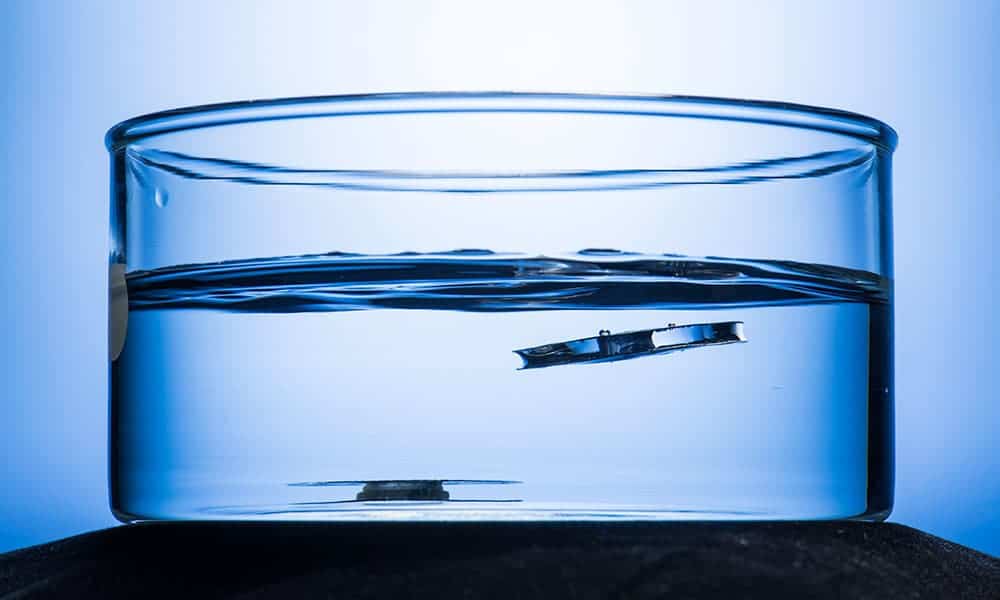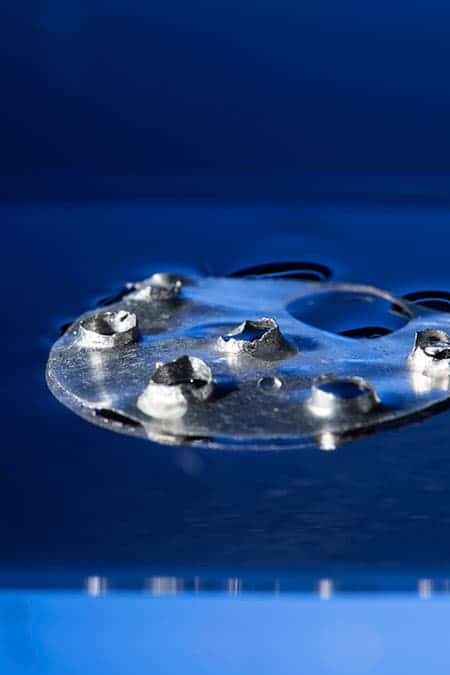This metallic structure is so water repellent (superhydrophobic) that it can stay afloat even when it is highly punctured. The innovative design was inspired by diving bell spiders and the rafts of fire ants.

Researchers at Rochester University, led by Chunlei Guo, who is a professor of optics and physics, used high-speed, femtosecond laser pulses to etch intricate micro and nanoscale patterns onto the surface of aluminum plates. These patterns trap air, making the surface superhydrophobic.
However, when the plates are immersed in water for long periods of time, they eventually start losing their water-repelling properties and sink. Luckily, nature had already found a solution.
Diving bell spiders (Argyroneta aquatic) can survive for extended periods of time underwater by trapping air in their dome-shape web, also called a diving bell. The web carries air from the surface between the spider’s super-hydrophobic legs and abdomen. Fire ants employ a similar strategy, forming a huge raft out of many individuals that can stay afloat thanks to the air trapped between the ants’ superhydrophobic bodies.
“That was a very interesting inspiration,” Guo says. As the researchers note in the paper: “The key insight is that multifaceted superhydrophobic (SH) surfaces can trap a large air volume, which points towards the possibility of using SH surfaces to create buoyant devices.”
The researchers treated two aluminum plates by etching patterns with lasers and then placed them parallel to one another, facing inward, rather than outward. The resulting structure is enclosed and free from external forces. The separation between the plates is just right such that the structure may trap air to keep it floating. Essentially, the setup creates an air-tight, waterproof compartment even when the structure is forced to submerge in water by a heavy object.

Tests showed that even after being submerged for two months, the structure still bounced back to the surface of the water once a weight was released. When the structure was punctured multiple times, it could still float because air remained trapped in the undamaged sections. Guo says that although they used aluminum for this study, any metal could be made to float using this etching process.
According to the researchers, the technology is ready for commercial applications since the industry is already equipped with the fast scanning lasers required to do the nanoscale etching. Possible applications include unsinkable ships, highly water-resistant wearables, and electronic monitoring sensors that can survive long-duration missions in the middle of the ocean.
The findings were reported in the journal ACS Applied Materials and Interfaces.






